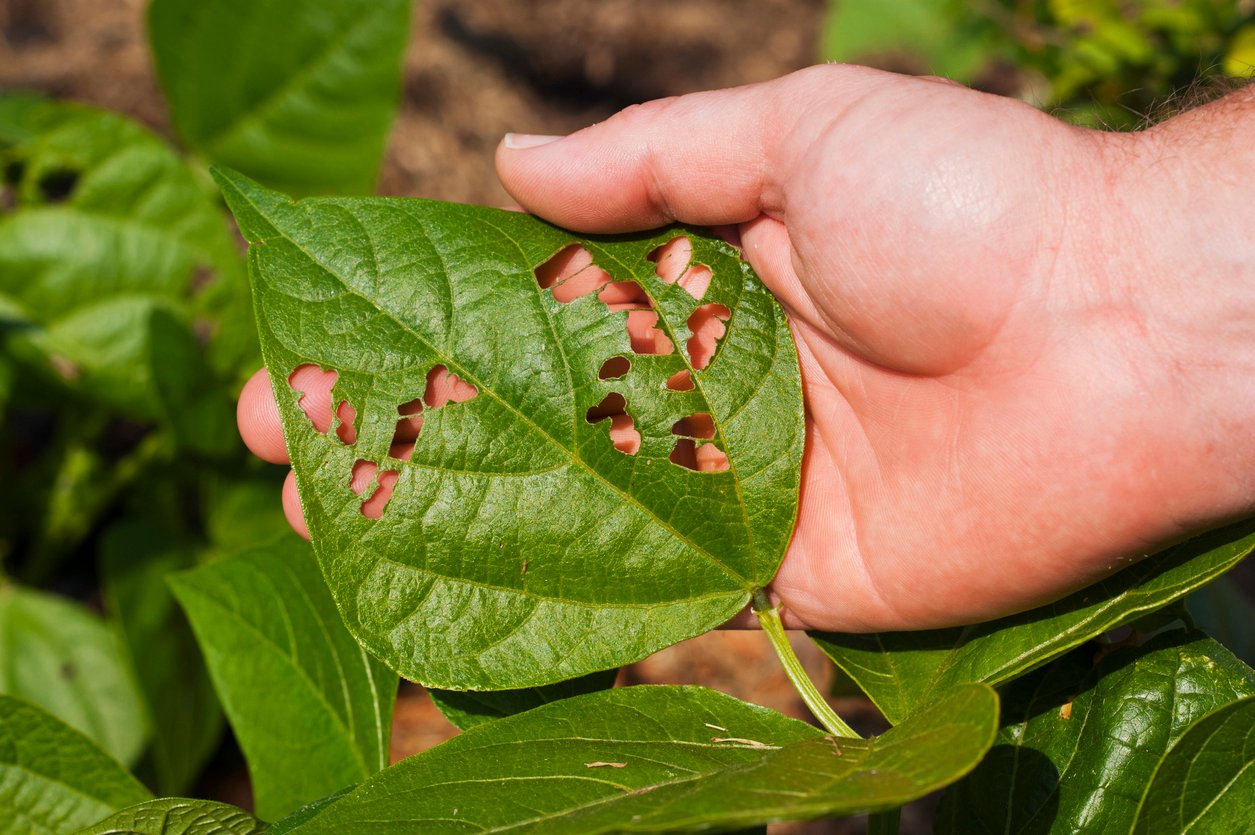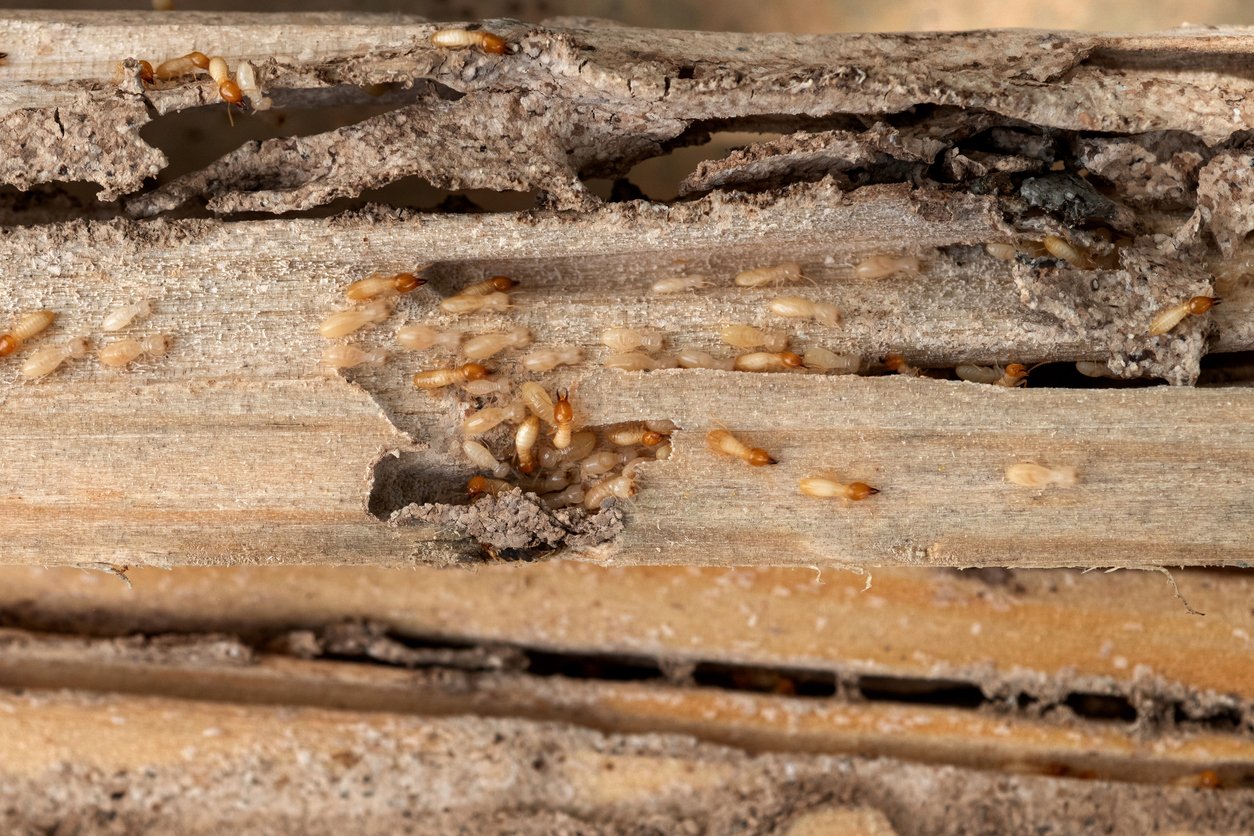What Is A Wheevil?
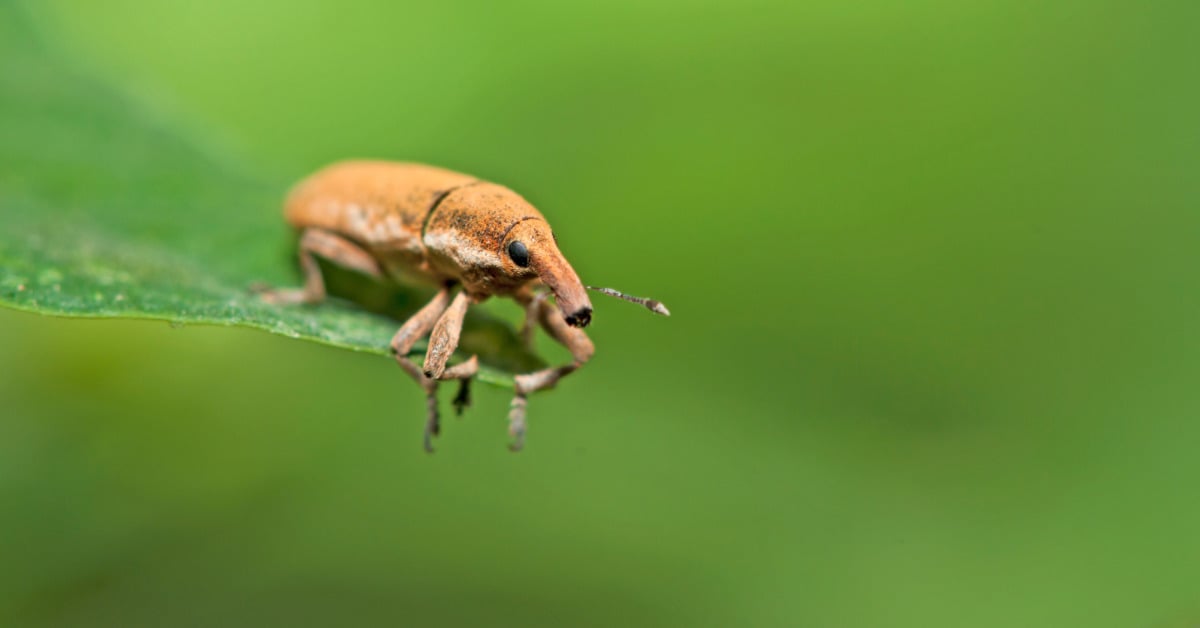
Weevils are small beetles from the Curculionidae superfamily, and there are over 3,000 different species in North America alone. These insects are typically characterized by their elongated snout, and there are several species that are known indoor pests.
Find out more about different types of weevils, what kind of damage they cause, and what to do if you’re dealing with an infestation in or around your home.
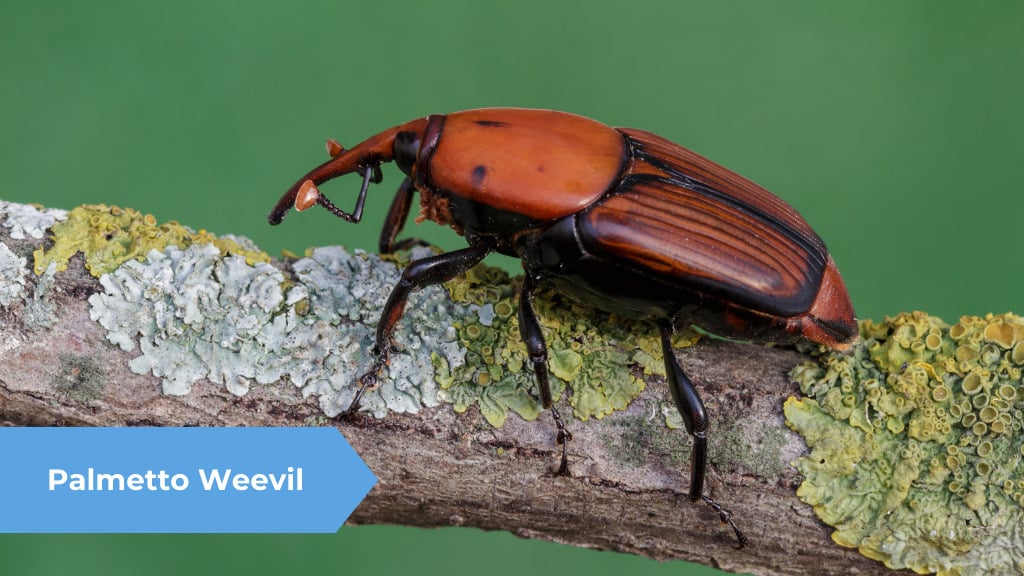
What are Weevils?
A true weevil is a small insect from the Curculionidae superfamily. Weevils have six legs, may or may not have wings, and vary widely in size—from the tiny 2 mm rice weevil to the 3 cm palmetto weevil.
What types of Weevils are found in the United States?
While there are thousands of types of weevils throughout the country, the most significant species of weevils in the U.S. are those that damage crops, plants, and stored grain products. These can be broken down into two main categories: interior weevils (also known as pantry weevils) and exterior weevils.
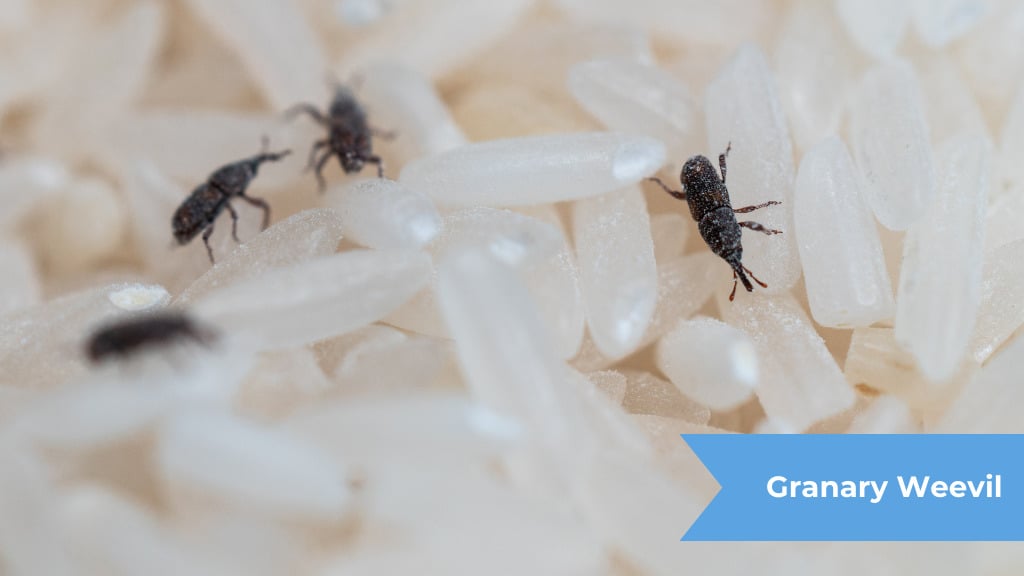
Interior Weevils
Weevils that are found inside homes are those that infest stored grain products like rice, corn, and maize (adult weevils will often make their way into flour as well). Stored product weevils enter your home directly through the manufacturer because these insects lay eggs in products inside factories. The USDA recommends storing grains commercially in weather-tight, rodent-proof bins, along with other quality control measures, but infestation is still an issue for certain batches of product due to cross-contamination, transportation, and other factors. That’s why it’s important to keep an eye out on the grains you buy and bring into your home.
There are three main species of interior weevils to watch for:
Rice Weevils (Sitophilus oryzae)
These are the smallest species of weevil, measuring only three thirty-seconds of an inch as adults. Rice weevils lay 250-400 eggs over the course of a few months. These eggs take only three days to hatch, after which the larvae feed inside individual grains of rice (or other products) for up to 18 days. Rice weevils are reddish brown to black with four yellow spots on their backs, and they can fly.
Granary Weevils (Sitophilus granarius)
Granary weevils are also called wheat weevils or grain weevils. Grain weevils are slightly larger than rice weevils but still very small (about ⅛–¼ of an inch long). These weevils are also red/brown to black, but they don’t have yellow spots and cannot fly.
Maize Weevils (Sitophilus zeamais)
Maize weevils are virtually identical to rice weevils in appearance and behavior. The main difference is that maize weevils have a preference for corn kernels. You might bring this species into your home by accident through birdseed or other grains.
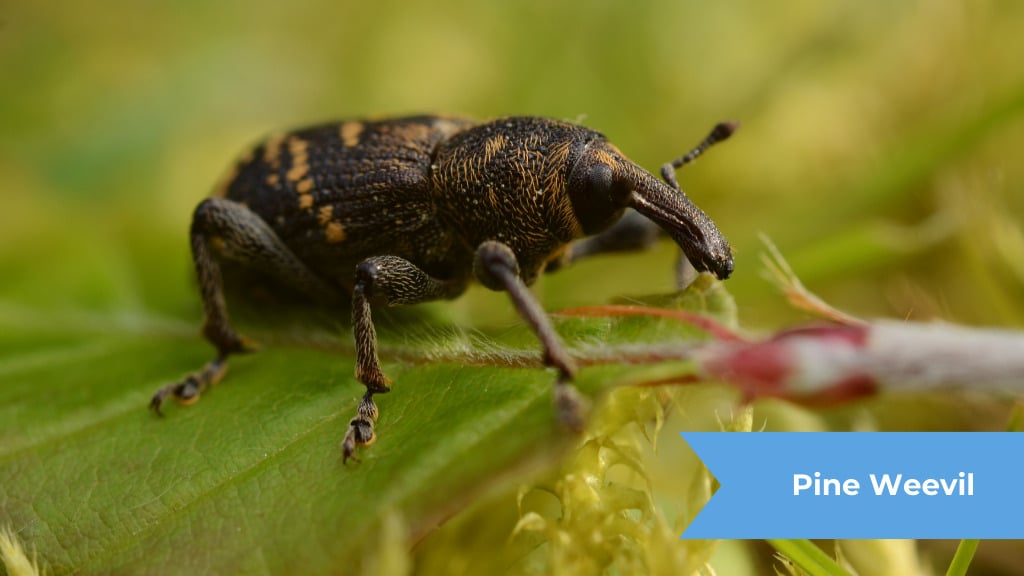
Exterior Weevils
Weevils that live outside don’t usually invade homes. If one of these species of weevils ends up in your home, it’s usually by accident, and they won’t seek out food sources.
Palmetto Weevils (Rhynchophorus cruentatus)
Palmetto weevils are the largest North American weevil, measuring over an inch long. They are shiny and black with yellowish markings. These insects are native to Florida, but they are found throughout other southern and southeastern states as well (especially near the coast). Palm weevils fly and feed on damaged palm trees.
Pine Weevils (Pissodes strobi)
For white pine trees, the pine weevil is its most destructive pest. If you’ve ever found holes in your pine trees with sap coming out, it’s likely due to these weevils. Pine weevils are 4–6 mm long, blackish brown with yellow spots, and appear to have small hairs all over their body. Adults lay eggs inside white pine trees, and larvae feed on the interior until they emerge as adults. Often the damage is so severe that the trees are irreparable.
Acorn Weevils (Curculio glandium)
Acorn weevils are brown, have large black eyes, a very thin snout, and measure about ⅜ inch long. If you have acorn trees, you may have found discarded acorns on the ground with small holes in them. This is likely due to acorn weevil larvae. They feed inside the nut, exit to stay dormant for 1–2 years, and then become adults.
Strawberry Root Weevils (Otiorhynchus ovatus)
Strawberry root weevils are flightless, ⅕ inch long, dark red in color, and lack the distinguishing long snout found in other weevils. While they mainly feed on roots outside, strawberry root weevils are attracted to moisture and may enter your home looking for shelter or a place to overwinter.
Boll Weevils (Anthonomus grandis)
Boll weevils were once a huge problem for cotton plants in the south, but farmers have since controlled the species for the most part. Boll weevils range in color from red to brown to gray and are ¼ inch long.
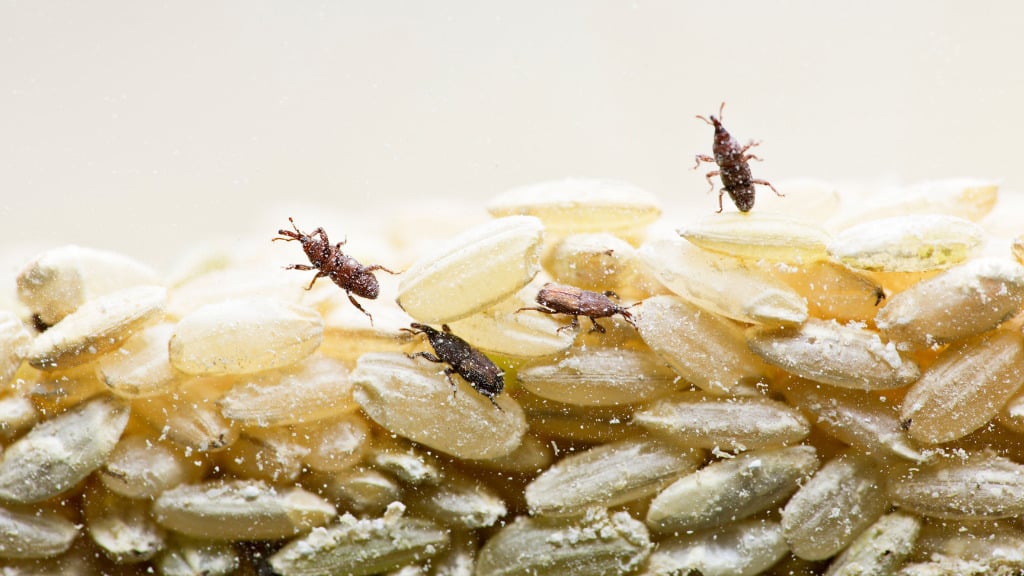
Can Weevils Cause Damage?
While weevils do have chewing mouthparts, they will not bite or harm humans or pets (phew!). However, weevils can cause damage in other ways:
- Outdoors, exterior weevils feed on things like palm trees, white pine trees, acorns, and cotton. Farmers often need to take measures to keep weevils out of their crops.
- Indoors, grain weevils will feed on the dry food products in your pantry. Fortunately, they won’t damage wood or other structures inside.
If you’re dealing with a weevil infestation inside or outside your home, it can be very difficult to eliminate these pests. The professionals at Moxie Pest Control can help you get rid of weevils and reclaim your home. Contact us today for all of your pest control needs, and let us help put your mind at ease with our pet- and family-friendly treatments.
